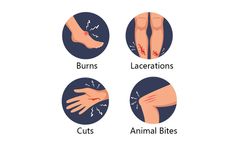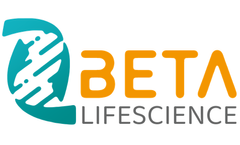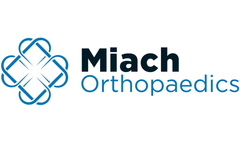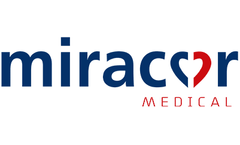Regenerating Tissue Articles & Analysis: Older
34 articles found
Some of the most promising applications include: Regenerative Medicine: Wharton’s jelly MSCs can potentially regenerate damaged tissues and organs due to their ability to differentiate into multiple cell types. ...
Regenerative Medicine: The concept of using mRNA to instruct cells to regenerate tissues is gaining traction. This innovative approach could potentially revolutionize how we treat injuries and degenerative diseases. ...
These traits make them the models par excellence for studying embryonic development, genetic disorders, organogenesis, and tissue regeneration. The realm of zebrafish genome editing services utilizes technologically-advanced tools like CRISPR/Cas9, TALENs, and ZFNs, with CRISPR/Cas9 reigning supreme due to its remarkable efficiency and precision. ...
Nanotechnology: Ovalbumin-based nanoparticles show promise in targeted drug delivery and imaging techniques. 2. Tissue engineering: The protein's biocompatibility makes it a potential candidate for scaffolding materials in tissue regeneration. 3. ...
This precision in directing cell development has the potential to revolutionize the field of regenerative medicine, providing new avenues for tissue repair and regeneration. However, custom mRNA production is not without its challenges, particularly the efficient delivery of artificial mRNA molecules into cells. ...
Collagen is one of the richest proteins in animals, mainly found in the skin, bones, tendons and connective tissue. Due to its key role in cell structure and tissue regeneration, accurate determination of the molecular weight of collagen is of great significance to the biomedical and cosmetics industry.Common Methods for Determining the Molecular ...
Puncture Wounds: Puncture wounds are small holes in soft tissue. They can be caused by objects like wood splinters or needles piercing the skin, usually affecting only the outer layer of tissue. ...
Materials Science: Protein engineering is being used to design novel biomaterials with tailored properties for tissue engineering, drug delivery, and other applications. For example, engineered proteins are being used to create scaffolds for regenerating damaged tissues and to develop nanoparticles for targeted drug delivery. ...
Features of Nano Dressings Dressing is a kind of medical material that can replace damaged skin or tissue, and can promote wound healing and tissue repair, such as gauze, bandage, sponge. ...
These traits make them the models par excellence for studying embryonic development, genetic disorders, organogenesis, and tissue regeneration. The realm of zebrafish genome editing services utilizes technologically-advanced tools like CRISPR/Cas9, TALENs, and ZFNs, with CRISPR/Cas9 reigning supreme due to its remarkable efficiency and precision. ...
They were initially identified in the bone marrow, but have since been found in various other tissues including adipose tissue, peripheral blood, cord blood, fallopian tube, and fetal liver and lung. ...
Epigenetic induction plays an instrumental role in facilitating cell growth, a fundamental process vital for maintaining normal physiological functions such as tissue regeneration, wound healing, and immune responses. The process abrogates the expression of genes that inhibit cell growth and proliferation in unnecessary circumstances and modulates it when ...
Cytokines play pivotal roles in regulating intrinsic and adaptive immunity, hematopoiesis, cell growth, pluripotent cells, and tissue repair. Cytokine Classification Cytokines are categorized into various subtypes, including interleukins (IL), interferons (IFN), tumor necrosis factor (TNF), colony-stimulating factor (CSF), chemokines, and growth factors (GF). ...
They play a role in regulating immune responses, cell growth and differentiation, tissue damage, and repair, among other biological activities. Classification and function Cytokines can be classified into different groups based on their functions, including: interleukin (IL), interferon (IFN), tumor necrosis factor (TNF), colony stimulating factor (CSF), chemokine family, growth ...
The invention of tissue adhesives brought great technological advances in surgery. At present, the tissue adhesives widely used clinically are mainly chemically synthesized cyanoacrylates and fibrin glues. ...
“We were intrigued by what we read,” Larissa says. “Regenerating tissue is less invasive than reconstructing and seems to put less stress on the body. ...
H2020 WIDESPREAD-05-2020: Twinning project GA No 952347 Click here for the News on the project implementation General information Project coordinator: Professor Dr.sc.ing. Janis Locs Project period: 1.01.2021.-31.12.2023. Project Partners: AO Research Institute Davos, Switzerland (ARI), Institute National Polytechnique de Toulouse CIRIMAT, France (INPUT-CIRIMAT), FORM-Lab Frankfurt Orofacial ...
Success doesn’t just come from a winning idea or an exciting new concept. Success comes from having a dedicated team behind that idea, with the enthusiasm and commitment to drive it from concept to clinic. ...
Pathophysiology, treatment options and hot topics Improvements In Stemi Treatment The immediate and long-term prognosis of patients experiencing an ST segment elevation myocardial infarction (STEMI) has changed dramatically since the introduction of coronary reperfusion therapies during primary percutaneous coronary intervention (pPCI). The evolution of these therapies accelerated with the ...
















